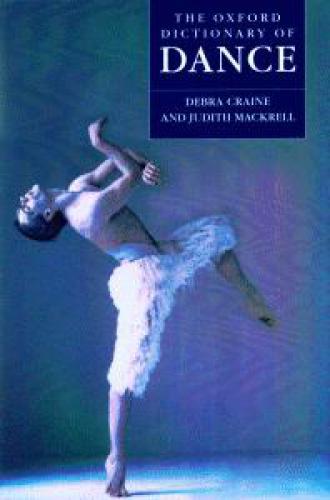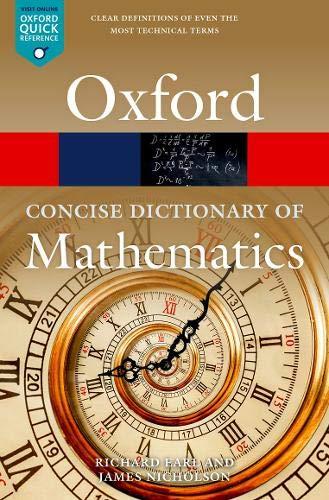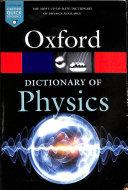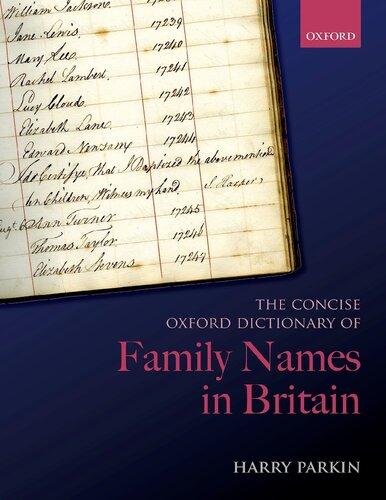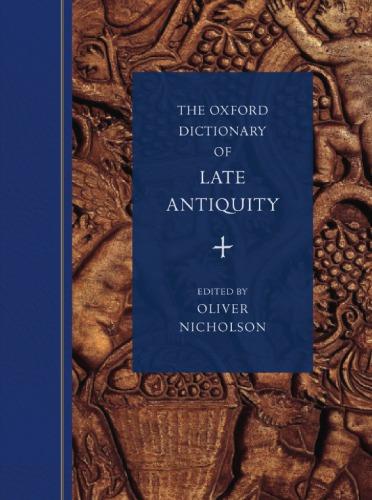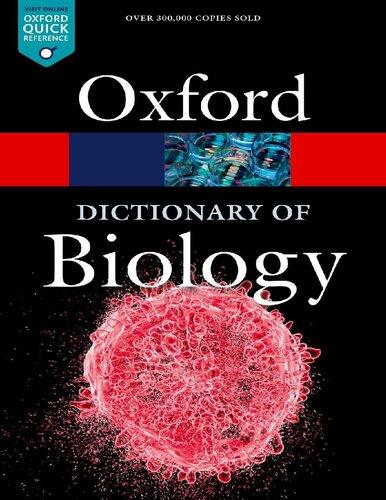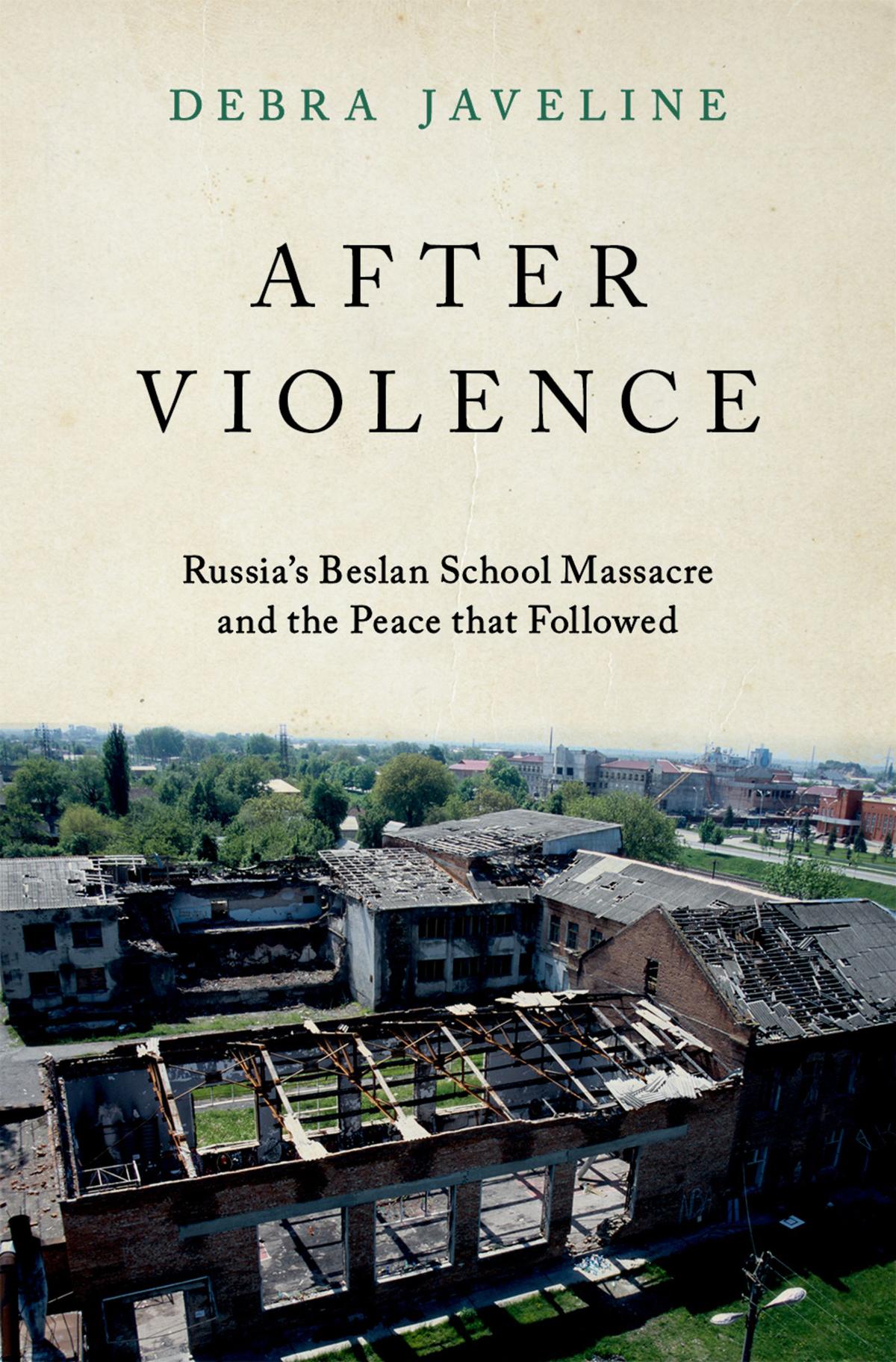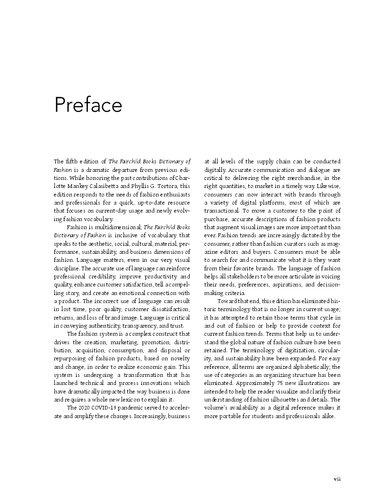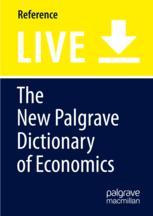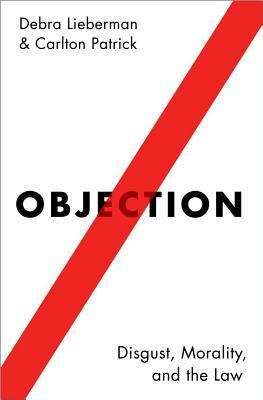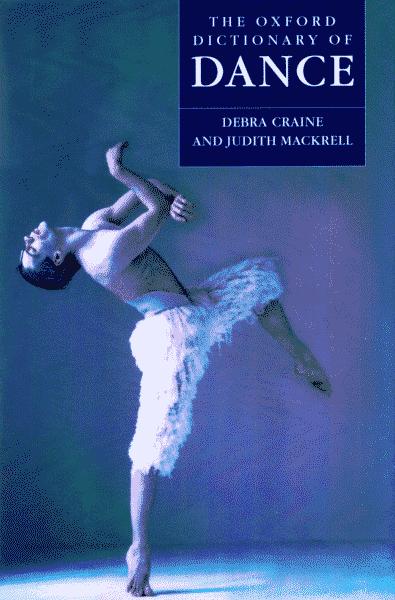The Oxford Dictionary of Dance
© Oxford University Press 2000, 2003
Published by Oxford University Press, Great Clarendon Street, Oxford OX2 6DP
Oxford is a registered trade mark of Oxford University Press
All rights reserved. No part of this publication may be reproduced, stored in a retrieval system, or transmitted, in any form or by any means, without the prior permission in writing of Oxford University Press, or as expressly permitted by law, or under terms agreed with the appropriate reprographics rights organisation. Enquiries concerning reproduction outside the scope of the above should be sent to the Rights Department Oxford University Press.
Look up a word or term
Look up an abbreviation
Look up a person
Look up a place
Look up a foreign word
Look up a title
Abbreviations
arr. arranged by attrib. attributed to chor. choreographed by des. design(s) by dir. directed by mus. music by orch. orchestrated by orig. originally perf. performance by prod. produced by
Dan. Danish
Eng. English
Fr. French
Ger. German
Gk. Greek
Heb. Hebrew
Hung. Hungarian
It. Italian
Russ. Russian
Sp. Spanish
Sw. Swedish
AAbraxas.
Ballet in five scenes with choreography by Luipart , libretto and music by Werner Egk , and design by Wolfgang Znamenacek . Premiered 6 June 1948 by the Bavarian State Opera, Prinzregenten Theatre, Munich, with Luipart, Irina Kladivova , and Schwarz . The plot is based on Heine's libretto DerDoctor Faust (1847, written for Benjamin Lumley but never staged) in which Faust makes a pact with a female devil, gaining youth and sexual gratification in exchange for his soul. He then meets Marguerite and his discovery of true love with her prompts him to tear up the pact, thereby causing both their deaths. The ballet was banned after four performances due to its ‘satanic’ material, but a second version rechoreographed by Charrat (1949) became one of the most popular ballets in the German repertoire. T. Schilling's staging (Dresden, 1957, revived Komische Oper) also enjoyed great success. (The title, Abraxas, refers to the central mystery of the Gnostics.)
Back - New Search
abstract dance.
A term loosely used to describe dance works without plot or character, though it has been argued that dance can never be entirely abstract since movement is performed by men and women and thus evokes some human content. Many dance works with no ostensible storyline may suggest powerful images to their viewers, for example, Cunningham's Winterbranch or Ashton's Symphonic Variations.
Back - New Search abstrakter Tanz.
Term used by Schlemmer to describe the dance aesthetic he developed at the Bauhaus, Weimar, during the mid-1920s. Dancers dressed in elaborate, disguising costumes were choreographed to
create the effect of colours and geometric forms moving in space, rather than to portray individuals or relationships.
Back - New Search
academic dance.
A term loosely synonymous with classical ballet, i.e. the theatre dance which evolved from the court ballets of the 16th and 17th centuries and which was refined through the national schools of France, Italy, and Russia. Its steps, positions, and movements are codified in the danse d'école which is still taught in the daily class taken by all classical dancers.
Back - New Search
Académie de Musique et de Poésie, L'.
Institution founded in Paris in 1570 by Charles IX to foster the love and study of arts.
Back - New Search
Académie Royale de Danse, L'.
The first dance institution established in the Western world, founded in Paris in 1661 by Louis XIV. He gave thirteen dancing masters the task of establishing standards of perfection for the art of dance. This group met regularly (often at the tavern L'Epée de Bois) with the brief to codify existing court and character dances, as well as to subject private and public dance teachers to examination. Those who passed were given the diplomas necessary to practise their profession and appointed Académicien de l'Art de la Danse. Noverre attacked the Academy for having published no treatise on dance theory or technique, though he joined its ranks in 1775. After the fall of the monarchy in 1789 it was closed down, though was briefly revived (1856–66) under the title Société Académie de ProfesseursArtistes du Théâtre de l'Opéra, with the prime concern of teaching ballroom dances.
Back - New Search
Académie Royale de Musique, L'.
The official name given to the Paris Opera in 1671. Its original name was L'Académie d'Opéra, given by its founders Abbé Perrin and the Marquis de Sourdéac in 1669. It was changed two years later with the first production of Pomone (19 Mar. 1671), a mixture of opera,
ballet, pastoral (mus. Robert Cambert , chor. Beauchamp ). Lully was director between 1672 and 1687 and the associated dance school, which still exists, was opened in 1713. The name of the institution has changed several times over the years and since 1871 has been called Théâtre National de l'Opéra. It is from this institution that French ballet has evolved rather than the Académie Royale de Danse.
Back - New Search academies of dance.
Several countries followed the model of the French academies of the 16th and 17th centuries by setting up institutions designed to maintain and perfect standards in the arts. One of the most famous dance academies is the Imperiale Regia Accademia di Ballo which was established in 1812 by Benedetto Ricci in Milan, attached to the Teatro alla Scala. London's Royal Academy of Dancing was opened in 1920.
Back - New Search
Accademia Nazionale di Danza (NationalAcademyofDancing).
School founded in Rome by Jia Ruskaia in 1948 for the training of teachers of dance.
Back - New Search
Achcar , Dalal (bRiodeJaneiroc.1935).
Brazilian dancer, choreographer, and ballet director. She studied with Maria Makarova and with teachers in America and Europe and in 1956 founded Ballet Rio de Janeiro. She organized international seasons in Brazil, featuring the Royal Ballet and Paris Opera. Her own choreography has focused on Brazilian themes using music and sets by Brazilian artists, such as Floresta Amazonica (Forest of the Amazon, 1975). She has also staged two productions of The Nutcracker (1970–4), and some of her works have entered the international repertory, including Something Special (mus. Ernesto Nazareth ).
Back - New Search
Acis and Galatea.
Ovid's story of the shepherd Acis and his love for the nymph Galatea (from Metamorphoses) has formed the basis of several ballet librettos, including Hilverding (Vienna, 1753), Noverre (mus. Aspelmayr , Vienna, 1722), O. Viganò (Venice, 1782), and Fokine (mus. G. Kadletz , St Petersburg, 1905).
Back - New Search
Acocella , Joan (bSanFrancisco,13Apr.1945).
US dance writer. She studied at Smith College and at the Universities of Padua, California (Berkeley), and Rutgers, becoming critic for Dance Magazine in 1982 and for the New Yorker in 1998. She has also written for other publications including Wall Street Journal; is author of Mark Morris (New York, 1993) and editor of André Levinson on Dance (with Garafola , 1991) and TheDiary of Vaslav Nijinsky(1999). She was awarded a Guggenheim Fellowship in 1993.
Back - New Search
Acosta , Carlos (bHavana,2June1973).
Cuban dancer. He studied at the National Ballet School of Cuba from 1983, then at Pinar del Rio. He worked with several companies in S. America and Italy then in 1991 he joined English National Ballet as principal. In 1992 he joined National Ballet of Cuba where he performed principal classical roles, then in 1993 moved to Houston Ballet as principal, dancing both classical and 20th-century repertories and creating the role of Misgir in Stevenson's The Snow Maiden (1998). He continued to guest with many international companies and between 1998 and 2000 was principal with the Royal Ballet, while maintaining his connection with Houston.
Back - New Search
Acrobats of God.
Modern dance work in one act with choreography and costumes by Graham , music by Carlos Surinach , and set by Noguchi . Premiered 27 Apr. 1960 by Martha Graham Dance Company at 54th St. Theater, New York, with Graham , Ross McGehee , and Taylor . A plotless but humorous work, celebrating the art of dance and honouring the discipline of the dancers' world.
Back - New Search adagio
(It., slow; interchangeable with Fr. adage). Describes any slow dance movement (as opposed to fast, allegro). It is also used to designate the section of the classical ballet class in which exercises are focused on balance and line, plus the first section of the traditional four-part pas de deux where the ballerina and her partner dance together.
Back - New Search
Adagio Hammerklavier.
Ballet in one act with choreography by van Manen , music by Beethoven , and designs by Jean-Paul Vroom . Premiered 4 Oct. 1973 by the Dutch National Ballet at Stadsschouwburg, Amsterdam, with Radius , Ebbelaar , Sand , Juriens , Marchiolli , and Sinceretti . It is set to the Adagio from Beethoven's Piano Sonata in B flat (Op. 106, the Hammerklavier) as interpreted in the recording by Christoph Eschenbach . The music is played at an exceptionally slow tempo which is reflected in the slow pace of the movement for its six dancers. It has been revived for Pennsylvania Ballet (1974), Berlin Opera Ballet (1975), and the Royal Ballet (1976), among others.
Back - New Search
Adam , Adolphe Charles (bParis,24July1803,dParis,3May1856).
French composer who wrote the scores for fourteen ballets, among them the most famous titles of the mid-19th century. They include La Fille du Danube (chor. F. Taglioni , Paris, 1836), La Jolie Fille du Gand(chor. Albert , Paris, 1842), LeDiableàquatre (chor. Mazilier , Paris, 1845), and Le Corsaire (chor. Mazilier , Paris, 1856). His masterpiece, though, was Giselle (chor. Coralli and Perrot , Paris, 1841) in which he developed the use of leitmotifs and atmosphere to great dramatic effect.
Back - New Search
Adams , Carolyn (bNewYork,6Aug.1943).
US dancer. She studied at Sarah Lawrence College, and performed with Waehner's Ballets Contemporains in Paris before joining the
Paul Taylor Company in 1965. A dancer of great personality and charm, combining brilliant technique with dramatic presence, she became one of Taylor's most highly regarded soloists, creating roles in several of his works including Public Domain (1968), Big Bertha (1971), and Esplanade (1975). She retired from the company in 1982 and became active in dance education, and chair of Dance USA, a national service organization for professional dancers.
Back - New Search
Adams , David (bWinnipeg,16Nov.1928).
Canadian dancer. He studied at the Winnipeg Ballet School, Sadler's Wells School, and with Volkova and Gontcharov , making his adult debut with the Royal Winnipeg Ballet in 1946. In the same year he joined Sadler's Wells Ballet then danced with various companies before becoming first soloist with National Ballet of Canada in 1951. In 1961 he joined London Festival Ballet and in 1970 the Royal Ballet where he danced until 1976. He created roles in several works, including Taras's Designs with Strings (1948) and MacMillan's Anastasia(1971 version). He was director of Ballet for All from 1976 to 1977. With the Toronto-based Encore! Encore! dance reconstruction project he and his brother Lawrence Adams and sister-in-law Miriam Adams have begun reviving the heritage of Canadian ballet, including in 1999 reconstructing Boris Volkoff's The RedEarofCorn(1949).
Back - New Search
Adams , Diana (bStanton,Va.,29Mar.1926,dSanAndreas,Calif.,10Jan.1993).
US dancer and teacher. She studied with de Mille , Tudor , and others and made her debut in 1943 in Oklahoma!The same year she joined Ballet Theatre where she was promoted soloist in 1945, then danced with New York City Ballet as ballerina (1950–63). A dancer of unusually long and graceful proportions she was originally considered a dramatic performer and created roles in de Mille's Fall RiverLegend(1948) and Tudor's Undertow, among others. Later she evolved into one of Balanchine's leading interpreters, creating roles in many of his works, such as La Valse (1951), Opus 34 (1954),
Agon(1957), and LiebesliederWalzer (1960). She also created roles in Ashton's PicnicatTintagel(1952) and Robbins's Facsimile(1946). Her film roles included Kelly's Invitation to the Dance (1956). After retiring from the stage she taught at the School of American Ballet where she was also active in selecting Ford Scholarship students. It was she who recommended Farrell to Balanchine.
Back - New Search
Adams , John (bWorcester,Mass.,15Feb.1947).
US composer. Dance plays an important role in two of his operas, Nixon in China (1987) and The Death of Klinghoffer (1991), where dancers (chor. Mark Morris ) double up with singers for the main characters. The repeating, energetic rhythms and bright orchestral colours of his concert music have made him popular among other choreographers and several of his scores have been used for dance, including Child's Available Light (New York, 1983) and A. Page's Fearful Symmetries (London, 1994). The latter score has also been used by P. Martins (New York, 1990), Doug Varone (Rise, New York, 1993), and Christopher d'Amboise (Synchronicities, Antwerp, 1999).
Back - New Search
Adventures in Motion Pictures.
British dance company. It was founded in 1987 by a group of students from London's Laban Centre and was originally a repertory ensemble performing a variety of small-scale works. M. Bourne rapidly emerged as its main choreographer although the dancers, including Scott Ambler , remain significant collaborators. AMP's shows have always been noted for their witty pastiche and drama, such as Spitfire (1988) which parodied the manners of romantic ballet dancers via the macho posing of male models, and Town and Country (1991) which was an affectionately satirical view of English life. In 1993 the company was commissioned by Opera North to stage a new version of TheNutcracker which was to be the first of several re-writes of classical ballets—HighlandFling(1994, based on LaSylphide), Swan Lake (1995), and Cinderella(1997). The awardwinning Swan Lake had a highly successful season in London's West End as well as touring to Los Angeles and Broadway. This show also
marked a more classical phase in Bourne's work, with several performances from dancers associated with the Royal Ballet, such as Seymour , Adam Cooper , and Fiona Chadwick .
Back - New Search
Adzido.
British-African dance company. It was founded in 1984 by George Dzikunu and Emmanuel Tagoe with the purpose of training students in African dance and drumming. It has since expanded into Europe's largest African dance company. Dzikunu researches a range of traditional African dance and music and although the company gives authentic versions of the material they are performed in the context of theatrical narrative, such as In theVillageofAfrica(1985), Under African Skies (1990), and Siye Goli (1991). The small-scale Adzido 12 performs largely community- and education-based work.
Back - New Search
After Eden.
Ballet in one act with choreography by Butler , music by Lee Hoiby , and design by Ter-Arutunian . Premiered 15 Mar. 1966 by Harkness Ballet, Monte Carlo, with Isaksen and Rhodes . It explores the emotions of two people expelled from paradise and has been revived for several companies including Netherlands Dance Theatre (1971).
Back - New Search
Afternoon of a Faun.
Ballet in one act with choreography by Robbins , music by Debussy , set and lighting by Rosenthal , and costumes by Sharaff . Premiered 14 May 1953 by New York City Ballet at City Center, New York, with LeClercq and Moncion . It is set to the Debussy score Prélude à l'après-midi d'un faune to which Nijinsky created his famous 1912 work. Robbins's version portrays two dancers practising in a ballet studio in front of an imaginary mirror (the audience). The couple appear to be narcissistically absorbed in their own reflections rather than aware of each other, although in the kiss which concludes the ballet, there is a suggestion of the girl's sexual awakening. It has been revived by many companies including the Royal Ballet (1971), Australian Ballet (1978), and Norwegian National Ballet (1991).
Back - New Search
Agamemnon ballets.
There have been several dance works choreographed around the story of the mythological king of Mycenae, who was father of Iphigenia, Orestes, and Electra and who was murdered by his wife Clytemnestra when he returned from Troy. These include Noverre's Der gerächte Agamemnon (mus. Aspelmayr , Vienna, 1772), Clerico's Il ritorno d'Agamennone (Florence, 1821), Laban's Agamemnon's Tod (1924), and Graham's Clytemnestra (mus. ElDabh , 1958).
Back - New Search
Age of Anxiety, The.
Ballet in one act with choreography by Robbins , music by Bernstein , sets by O. Smith , costumes by Sharaff , and lighting by Rosenthal . Premiered 26 Feb. 1950 by New York City Ballet, at City Center, New York, with LeClerq , Moncion , Bolender , and Robbins . It is set to Bernstein's 2nd Symphony, itself based on W. H. Auden's TheAgeof Anxiety: ABaroqueEclogue(1946) and portrays four dancers losing their illusions as they attempt to discover life's meaning. Neumeier created a version for Hamburg Ballet in 1979.
Back - New Search
agitando.
Spanish term referring in general to the gypsy quality of a Spanish dance or dancer and, specifically, to the heel technique employed in non-flamenco Spanish dances.
Back - New Search
Aglaë, ou I'Élève d'amour.
Ballet divertissement in one act with choreography by F. Taglioni and music by Johann Friedrich Keller . Premiered 22 Jan. 1841 in St Petersburg with M. Taglioni in the title role. It tells the story of the nymph Agläe, her master Cupid, a faun, and a young man.
Back - New Search
Aglië , Filippo d' (bTurin,27Mar.1604, dTurin19July1667).
Italian diplomat, poet, musician, and choreographer. He was one of the first choreographers of the Italian-French court ballet and staged many spectacular productions e.g. Iltabacco(Turin, 1650).
Back - New Search
Agon.
Ballet in one act with choreography by Balanchine , music by Stravinsky , and lighting by Nananne Porcher . First performed at a benefit preview 27 Nov. 1957, and officially premiered 1 Dec. 1957, by New York City Ballet at City Center, New York, with Adams , Hayden , Mitchell , and Bolender . It is set to Stravinsky's specially commissioned score, the title of which is Greek for contest, and its twelve dancers, dressed in plain practice clothes, frequently appear to compete for technical precedence in feats of balance, strength and co-ordination. In the pas de deux which concludes the second of the work's three major sections the traditional language of classical partnerwork is wittily and erotically inverted as the man and woman try to assert dominance over each other. Stravinsky's score, while astringently modernist in its serial compositional technique, refers back to the structure of court dances like saraband, galliarde, and branle, while Balanchine's athletic, stripped-down choreography has similar echoes of those dances' characteristic steps and manners. The ballet is widely considered to be one of Balanchine's masterpieces and also one of the century's greatest dance works. It has been revived for many other companies including Stuttgart Ballet (1970), Royal Ballet (1973), Paris Opera (1974), Berlin Opera Ballet (1977), Zurich Opera Ballet (1978), and Birmingham Royal Ballet (1996). Other choreographers who have used the same score include MacMillan (London, 1958) and T. Gsovsky (Berlin, 1958).
Back - New Search
Ahn Ae-soon (bSeoul,30Apr.1960).
Korean dancer and choreographer. She studied at Ewha Women's University and with Yook Wan-soon . In 1983 she formed her own modern dance group Nesaram as well as performing in Yook Wansoon's company and in the same year choreographed Guys and Dolls, the first musical to be staged in Korea. In 1984 she joined the Korean Modern Dance Company, for which she has created many works, such as Sun,Moon,Breath(mus. Nyman , 1994). Her works
fuse Korean styles and attitudes with the language of Western modern dance.
Back - New Search
Ahonen , Leo (bViipuri,19June1939).
Finnish dancer, teacher, and ballet master. He studied at the ballet school of the Helsinki National Opera and at the Leningrad Ballet School and made his debut in 1954 with the Finnish National Opera Ballet. He subsequently guested with many other companies including the Kirov, the Bolshoi, Dutch National Ballet, Royal Winnipeg Ballet, and Houston Ballet. He founded and directed his own Texas Ballet Company and has also developed his own system of dance notation. He has become a celebrated teacher, holding the Golden Achievement Award for International Pedagogues. Since 1978 he has been ballet master at Clear Lake Metropolitan Ballet, Texas.
Back - New Search ailes de pigeon
(Fr., pigeon wings), also called pistolet. A particularly demanding ballet step which most famously occurs in the Blue Bird variation in SleepingBeauty. The dancer throws the left leg up, springing off the right which rises to beat beneath the left calf. He changes legs and beats, then changes again in order to land on the right foot, with the left leg stretched out into the air. It is performed en avant and en arrière.
Back - New Search
Ailey , Alvin (bRogers,Tex.,5Jan.1931,dNewYork,1Dec.1989).
US dancer, choreographer, and director. He studied in Los Angeles with Horton and later with Graham , Holm , and Weidman in New York, making his debut in Horton's company in 1950. In 1953, after Horton's death, he took over as director, then in 1954 went to New York to dance in the Broadway musical House of Flowers. In the same year he also appeared in the film Carmen Jones. A big, graceful dancer he gave his first New York concert in 1957 and in
1958 formed the Alvin Ailey American Dance Theater. In the company's first year he created Blues Suite, a dance distilling the pain and anger traditionally associated with blues songs and his own African-American heritage. It became one of Ailey's most popular works, defining his stylistic mix of modern, jazz, classical, and black dance and his unique ability to entertain audiences with a fusion of powerful emotion and flamboyant theatricality. In 1960 he created the company's signature work Revelations, which was followed by numerous other works, including Masekela Language (mus. H. Masekela , 1969), Cry (a solo for Judith Jamison , mus. Alice Coltrane , 1971), and Night Creature (mus. Ellington , 1975) which has been taken into the repertoire of several other companies e.g. London Festival Ballet. He also choreographed works for the Robert Joffrey Ballet, including Feast of Ashes (mus. Carlos Surinach , 1962), and for American Ballet Theatre, including River (mus. Ellington , 1970), as well as for musical comedies and for Samuel Barber's opera Antony and Cleopatra (1966). From 1964 his company has toured extensively overseas and in 1972 it changed its name to Alvin Ailey City Center Dance Theater when it became resident in that venue. It reverted back to its original name in 1976 and in 1979 both school and company moved to the Minskoff building. After Ailey's death Judith Jamison took over as director, continuing his vision and his policies with marked success. The dancers in the company have always featured a broad racial mix, with highly individual personalities and dance styles, and the repertoire has included an eclectic range of works by choreographers other than Ailey including Horton , McKayle , Talley Beatty , Lubovitch , Ulysses Dove , van Manen , Bill T. Jones , Jamison , and Redha .
Back - New Search
air, en l'
(Fr., in the air). Refers to steps performed while jumping, also to those where the working leg (as opposed to the supporting leg) is positioned in the air rather than on the ground (par terre).
Back - New Search
Airs.
Modern dance work in one act with choreography by P. Taylor , music by Handel , design by Gene Moore , and lighting by Tipton . Premiered 30 May 1978 at City Center, New York, by the Paul Taylor Dance Company. Its exuberant mix of classical and modern dance, combined with a courtly elegance of manner, has brought it international popularity and it has entered the repertory of many companies, including Ballet Rambert (1982).
Back - New Search
Åkesson , Birgit (bMalmö,1908).
Swedish dancer and choreographer. She studied with Wigman and joined her company in 1931. In 1934 she made her solo debut in Paris after which she toured in Europe and America, developing her own style of modern dance. She created several ballets for the Royal Swedish Ballet in collaboration with Swedish composers, poets, and painters, including Sisyphus (mus. Blomdahl , 1957), Rites (mus. Lidholm , 1960), and Icaros (mus. Sven Erik Bäck , 1963). In 1964 she co-founded the Stockholm choreographic institute with Bengt Hager (now the State Dance School) where she was head of the choreography department until 1968. After her retirement she conducted research into traditional African dance.
Back - New Search
Akimov , Boris (bVienna,25June1946).
Soviet dancer and director. He studied at the Moscow Ballet School and danced with the Bolshoi Ballet from 1965 to 1989, creating Rothbart in Grigorovich's Swan Lake (1969) and Prince Kurbsky in his Ivan the Terrible (1979). Since 1980 he has been a teacher in Russia and abroad, including with the Royal Ballet and La Scala. In 2000 he was appointed director of the Bolshoi Ballet.
Back - New Search
A la recherche de …
Ballet in three parts with choreography by Béjart , music by Webern in the first section and texts by Juan de la Cruz in the second. Premiered 26 July 1968 by Ballet of the 20th Century in Avignon
with Sifnios , Pinet , and Lanner in first section, M. Césares reciting in the second, and Bortoluzzi , Asakawa , Donn , Bari , Lommel , and Gielgud in the third. It moves from a display of pure neo-classical ballet to a symbolic tale of three men embarking on a quest and encountering the gods Rama, Krishna, and Shiva.
Back - New Search
Albert , François Decombe (orig.FrançoisDecombe; bBordeaux,10Apr . 1787(somesourcessay1789),dFontainebleau, 19July1865).
French dancer and choreographer. He studied from the age of 10, with one short lapse, making his debut in Bordeaux in 1799. He became premier danseur at the Théâtre de la Gaité in Paris and in 1808 (some sources say 1803) moved to the Paris Opera where he was also ballet master (1829–42). He also worked in London at various times between 1821 and 1845, in Naples (1825), in Vienna (1830), and in Brussels (1838–40). At a time when male dance style was moving towards athletic technique Albert continued to exemplify the refined nobility of 18th-century ballet. He was considered the most handsome dancer in Europe. He created roles in Gardel's Paul etVirginie(1806), F. Taglioni's Aglaë(London version 1841), and his own The Marble Maiden (1845). He choreographed several other ballets, including Cendrillon(mus. A. Sor , Paris, 1823), LaJolieFille deGand(mus. Adam , Paris, 1842), and the ballet divertissements in Donizetti's opera La Favorite (Paris, 1841). As a teacher he developed systematic methods for improving the strength and stamina of his pupils, publishing a manual L'Artdeladanseàlaville etàlacour(Paris, 1834).
Back - New Search
Albertieri , Luigi (bMilan,1860,dNewYork,25Aug.1930).
Italian dancer and ballet master. At the age of 10 he became the favourite pupil of Cecchetti who adopted him and they performed together in the London premiere of Manzotti's Excelsior. Between 1866 and 1902 he was premier danseur of the Empire Ballet in London, also working as choreographer at Covent Garden (1895–1902), and appearing in America in 1895. He was ballet master of
Chicago Lyric Opera (1910–13) and between 1913 and 1927 was ballet master of the New York Metropolitan Opera House where he staged many ballets and operas. In 1915 he opened a school where Astaire was one of his most promising pupils. He wrote The Art of Terpsichore(New York, 1923).
Back - New Search
Aldous , Lucette (bAuckland,NZ,26Sept.1938).
Australian dancer and teacher (she moved to Australia when she was four months old). She studied in Sydney then won a scholarship to Sadler's Wells Ballet School (1955–7). In 1957 she became soloist with Ballet Rambert, becoming ballerina, and remaining there till 1963. She danced with London Festival Ballet (1963–6), with the Royal Ballet (1966–70), then became principal ballerina with Australian Ballet (1971–7). A lively, brilliant technician, her gift for comedy was displayed in roles like Swanilda and Kitri (which she danced in Nureyev's film of Don Quixote, 1973), though she also displayed a gentle lyricism in LaSylphide. In 1977 she danced in the film The Turning Point, partnered by Bujones . She married the dancer Alan Alder . After retiring from the stage she became a teacher at the West Australian Academy of Performing Arts.
Back - New Search
Aldridge , Robert (bc.1738,dEdinburgh,1793).
Irish dancer and teacher. During the middle of the 18th century he ran a dance school in Dublin. He also choreographed some Irish ballets in London and went on to open a famous dance school in Edinburgh. He was the teacher of dancer Simon Slingsby .
Back - New Search
alegrias.
Flamenco dance in 3/4 or 6/8 time which is characterized by its elegant style and opulent arm movements.
Back - New Search
Aleksidze , Georgy (bTbilisi,7Jan.1941).
Soviet-Georgian dancer and choreographer. He studied at Moscow
Ballet School with A. Messerer and made his debut at the Tbilisi Opera in 1961. He then went to study at the Choreographers' Faculty of Leningrad Conservatory with F. Lopukhov and created his first ballet in 1966 for the newly created Chamber Ballet. Inspired by New York City Ballet's first visit to the Soviet Union in 1962 he was one of the first Soviet choreographers to create plotless ballets, though his output has included some dramatic works. In 1968 he created Oresteia(mus. Falik ) for the Kirov followed by TheScythian Suite (mus. Prokofiev , 1969). From 1967 he also taught at the Leningrad Conservatory and from 1972 to 1980 he was artistic director and chief choreographer of the Tbilisi Opera Ballet. His many works for the company have included Variations on a Theme by Mozart (mus. Chopin ), Classical Symphony (mus. Prokofiev ), and Berikoaba (mus. Kvernadse , all 1973), Coppélia (1975), Nutcracker (1977), and Medea (mus. Gabichvadze , 1978). From 1980 to 1983 he was chief choreographer at Perm Theatre of Opera and Ballet, after which he worked at the opera studio of the Leningrad Conservatory (1983–5). In 1985 he returned to Tbilisi where he has created several works including SwanofTuonela(mus. Sibelius , 1988) and Concerto Grosso (mus. Schnitke , 1989). In 1992 he founded a small company attached to the St Petersburg Cappella for which he has choreographed many works that also feature in the repertory of Yekaterinburg City Ballet.
Back - New Search
Alexander Roy London Ballet Theatre.
See Roy , Alexander.
Alexander Technique.
Back - New Search
Body alignment technique developed by Frederic Matthias Alexander (1869–1955). With its emphasis on releasing unnecessary tension from the body and on re-discovering efficient ways of moving and positioning it has become widely respected among dancers both as a therapy and as a movement philosophy.
Back - New Search
Alhambra ballets.
The Alhambra Theatre in Leicester Square was one of London's top music halls between 1864 and 1936 with ballet as one of its main attractions for many years. International star dancers appeared in the theatre, such as Legnani and Geltser , and though most of the ballets presented were little more than entertaining spectacle, some were choreographed by distinguished artists, including J. Hansen , Gorsky , and Berger . In 1919 Diaghilev's Ballets Russes premiered Massine's La Boutique fantasque and Le Tricorne here and in 1921 staged their opulent revival of TheSleepingPrincess.
Back - New Search
Alice in Wonderland.
Several choreographers have used Lewis Carroll's book as a basis for ballet, including Charnley for London Festival Ballet (mus. Joseph Horovitz , 1953), E. Virginia Williams (Boston, 1972), Tetley for National Ballet of Canada (mus. D. Del Tredici , 1986), and D. Deane for English National Ballet (mus. Tchaikovsky , arr. C. Davis , 1995).
Back - New Search
Allan , Maud(e) (bCanada,27Aug.1873,dLosAngeles,7Oct.1956).
Canadian dancer. She studied music and fine art and became interested in dance through her enthusiasm for reviving the dance forms of ancient Greece. In 1903 she made her debut in Vienna in The Vision of Salome (mus. Marcel Rémy ) in a daringly revealing costume, shocking many in the climax where she kissed John the Baptist's severed head. She danced mostly barefoot and toured all around the world, finally settling in England where she taught in her own school (1928–40). She wrote MyLife andDancing(London and New York, 1908).
Back - New Search
Allard , Marie
(b Marseilles, 14 Aug. 1742 (some sources say 1738), d Paris, 14 Jan.1802).
French dancer. She is now famous for being the mother of Auguste Vestris (the result of a brief liaison with G. Vestris ), but she was also a very popular dancer. Petite and piquante, she excelled in comic and character roles. She made her debut in Marseilles around 1752
and was prima ballerina at the Lyons Opera House (1754–6). She later danced at the Paris Opera (1761–81) where she appeared in many ballets, including the premiere of Mozart and Noverre's Les PetitsRiens(1778). She is thought to have choreographed several of her own divertissements and entrées. She retired after several pregnancies had caused her to become too plump for public taste.
Back - New Search
Allegri Diversi.
Ballet in one act with choreography by Bintley , music by Rossini , and design by Terry Bartlett . Premiered 15 Jan. 1987 by Sadler's Wells Royal Ballet, at Sadler's Wells, London, with Karen Donovon and Petter Jacobsson . A series of scintillating classical dance variations, set to Rossini's Variations for Clarinet and Small Orchestra and his Introduction, Theme, and Variations for Clarinet and Orchestra.
Back - New Search allegro
(It., merry). General term to describe a quick and lively tempo, it also refers specifically to any combination of fast steps (as opposed to adagio) as well as to the section in a ballet class which follows adagio. Here dancers perform steps that are designed to improve their speed and attack, plus their ability to jump and turn.
Back - New Search
Allegro, il penseroso ed il moderato, L'.
Modern dance work in two acts with choreography by Mark Morris , music by Handel , set by Adrianne Lobel , costumes by Christine Van Loon , and lighting by James F. Ingalls . Premiered 23 Nov. 1988 by the Mark Morris Dance Group at the Théâtre de la Monnaie, Brussels. Morris's setting of Handel's dramatic oratorio is considered to be one of his finest and most ambitious works. Structurally it closely follows both Charles Jennens's text (based on Milton ) and Handel's score in its alternation of sanguine and melancholic viewpoints. Visually it also draws on Blake's series of watercolour illustrations of Milton's poems. The movement contrasts pale, exquisite images of melancholy with extrovert, earthy humour and
frequently makes comically literal references to hunting or farming scenes in the text. It conjures a classical, pastoral world of goddesses, shepherds, artists, men, and beasts and concludes with a rousingly utopian vision of harmony.
Back - New Search
Allegro Brillante.
Ballet in one act with choreography by Balanchine , music by Tchaikovsky , costumes by Karinska , and lighting by Rosenthal . Premiered 1 Mar. 1956 by New York City Ballet at City Center, New York, with Maria Tallchief and Magallanes . This virtuoso setting of Tchaikovsky's 3rd Piano Concerto, Op. 75, is for one lead and four supporting couples, and has been taken into the repertory of many companies, included Sadler's Wells Royal Ballet (1973).
Back - New Search allemande
(Fr. for German). Term applied to several dances or styles of movement popular between the 15th and 19th centuries, and denoting either a German origin or German characteristics. Arbeau records an allemande in duple time that was a simple processional dance. In the mid-18th century the term denoted lively turning dances in 3/4 time that came from Germany in which couples held each other in an unusually close embrace.
Back - New Search
Alleyne , John (bBarbados,25Jan.1960).
Bajan-Canadian dancer, choreographer, and director. He trained at the National Ballet School, Toronto, and in 1978 joined Stuttgart Ballet as a dancer, creating several ballets for the company workshops. In 1984 he joined National Ballet of Canada as first soloist, dancing classical and modern principal roles, and becoming resident choreographer. His works for the company include BlueEyed Trek (1988) and Interrogating Slam (1991), created in a style which fuses an essentially classical idiom with modern power and stretch. During this period he also created several works for Ballet British Columbia, such as Go Slow Walter (1990). In 1992 he
became artistic director of the company and he has since created many works for them, including TheDonJuanVariations(1995) and TheGoldberg(1998) as well as choreographing for other companies, including New York City Ballet, San Francisco Ballet, Dance Theatre of Harlem, and Stuttgart Ballet.
Back - New Search allongé
(Fr., lengthened). Designates an unusually elongated line in ballet. In an arabesque allongé the body is held almost parallel to the floor with the front arm and back leg extended.
Back - New Search
All That Jazz.
Bob Fosse's 1979 film about a workaholic film director which was based heavily on his own life. It features Airotica, one of his most aggressively erotic dance numbers.
Back - New Search
Allumez les étoiles.
Ballet in one act with choreography by Petit , libretto by Petit and Jean Ristat , and music by Prokofiev , Shostakovich , Mussorgsky , and Georgian folk songs. Premiered 5 May 1972 by Ballet de Marseilles, Marseilles , with Petit , B. Malinowski , and Lowski . It is based on the life of the revolutionary poet Vladimir Mayakovsky , and was inspired by lines he wrote in 1913: ‘Listen!—they are lighting | Up the stars.’
Back - New Search
Alma ou La Fille de feu.
Ballet in four acts with choreography by Cerrito and Perrot , music by G. Costa , libretto by André Jean-Jacques Deshayes , and design by W. Grieve . Premiered 23 June 1842 at Her Majesty's Theatre, London. It tells the story of a beautiful statue brought to life by the evil demon Belfegor in order to seduce mortal men. When she herself falls in love with the Moorish prince Emazor she is turned back to stone. Cerrito as Alma had one of her greatest successes in this ballet, particularly in the pas de fascination where, accompanied by a tambourine, she was required to display her most bewitching
qualities. Perrot also choreographed a substantial role for himself as Belfegor.
Back - New Search Alonso , Alberto (bHavana,22May1917).
Cuban dancer and choreographer. Brother of Fernando Alonso , and brother-in-law of Alicia Alonso . He studied with several teachers including Preobrajenska and Idzikowski and danced with Ballets Russes de Colonel de Basil from 1935 to 1940. He subsequently danced with Ballet Theatre (1943–5), Ballet Alicia Alonso (1948–9), and after 1966 with National Ballet of Cuba. From 1941 he also worked as ballet master and choreographer, creating several works including Espacio y movimiento (National Ballet of Cuba, mus. Stravinsky , 1966), which won the prize for best choreography at Varna in 1968, and Carmen (Bolshoi Ballet, mus. Bizet-Shchedrin , 1967, revived for many companies, including Ballet Argentino and Moscow Festival Ballet). He continued choreographing for several companies including New York's Ballet Hispanico in 1994.
Back - New Search Alonso , Alicia (néeAliciaErnestinadelaCaridaddeiCobre MartinezHoyo; bHavana,21Dec.1920).
Cuban dancer and director. She studied in Havana, then in New York with Vilzak and at the School of American Ballet, and later with Volkova in London. She started her dancing career in Broadway musicals then in 1939 joined Ballet Caravan. In 1940 she moved to Ballet Theatre where she danced until 1960, though with some interruptions. Between 1941 and 1943 she performed with Havana's Pro-Arte company and in 1948 she returned to Havana to found Ballet Alicia Alonso and its associate school in 1950. Between 1955 and 1960 she also guested with various companies including Ballet Russe de Monte Carlo. For much of her career she performed with Youskevitch , their partnership often regarded as one of the greatest of the 20th century. An intensely dramatic dancer as well as a pure classical technician, her most famous role was Giselle, but she also created roles in many new ballets including Tudor's Undertow
(1945), Balanchine's ThemeandVariations(1947), and de Mille's Fall River Legend (1948). The title role in Alberto Alonso's Carmen (1967) was considered one of her most fascinating portraits. Her own company became Ballet de Cuba in 1955, then when Fidel Castro came to power in 1959 it changed its name to National Ballet of Cuba. As the company's director and prima ballerina she became the dominant dance personality of Central America. She and the company have toured widely in the USSR, China, and Europe. She has staged most of the standard classics, including Giselle(1945 for Pro-Arte and many times subsequently for different companies), Swan Lake (1954 for Ballet Alicia Alonso and 1976 for Teatro de Bellas Artes, Mexico), and SleepingBeauty(1974 for Paris Opera and 1983 for La Scala), and has also choreographed several works. In 1975 she returned to dance the pas de deux from Act II of Swan Lake for a gala at American Ballet Theatre, and she continued to dance into old age, despite severely impaired sight. She was first married to the ballet director Fernando Alonso , then to Pedro Simon . She received the Decoration of Carlos Manuel de Cespedes in 1947 and was awarded the Médaille de la Ville de Paris and the Prix Pavlova in 1966.
Back - New Search
Alonso , Fernando (bHavana,27Dec.1914).
Cuban dancer, teacher, and director. Brother of Alberto Alonso and first husband of Alicia Alonso . He studied in Havana and later New York with Mordkin and Vilzak and at the School of American Ballet. He made his debut with the Mordkin Ballet and also danced in musicals, with Ballet Caravan and with Ballet Theatre. Returning to Havana he became soloist with the Pro-Arte company and from 1948 to 1975 he was director of Alicia Alonso's company (subsequently National Ballet of Cuba). He later directed his own company, Ballet de Camagüey, for which he choreographed a version of LaFillemal gardée.
Back - New Search Alston , Richard
(bStoughton,30Oct.1948).
British dancer, choreographer, and director. He gave up art college to study dance, entering the London School of Contemporary Dance in 1967. In 1970 he joined London Contemporary Dance Theatre and in the same year began to create works for the company. In 1972 he formed Strider, a small independent group performing works by him and other company members, and in 1975 he left for New York to study with Cunningham , returning to London in 1977 to form his own company. In 1980 he was made associate choreographer of Ballet Rambert and in 1982 he was co-founder of Second Stride, though he withdrew after two seasons. In 1986 he became Rambert's artistic director, and was responsible for changing the company's name to Rambert Dance Company and for shifting the repertoire from dramatic to more abstract dance, bringing in works from Cunningham , T. Brown , and Childs. He left in 1993 and a year later formed the Richard Alston Dance Company. Though his work is strongly influenced by Cunningham it has a lyricism (that partly derives from Ashton ) and also a very individual responsiveness to music. He is renowned for using contemporary composers and/or painters in his work, such as Wildlife (mus. Nigel Osborne , des. Richard Smith , 1984), SodaLake (des. Nigel Hall , 1981), Pulcinella (mus. Stravinsky , des. Howard Hodgkin , 1987), Hymnos (mus. Peter Maxwell Davies , 1988), and Bach Measures (mus. Harrison Birtwistle , 1996), though he has also set works to Mozart in Dealing withShadows(1990) and Rameau in BriskSinging(1997).
Back - New Search
Alt , Marlis (bUffenheim,19Mar.1950).
German dancer. She studied at Essen Folkwang Hochschule and then in New York with Graham . Between 1973 and 1978 she was a leading soloist with the Wuppertal Dance Theatre creating roles in many of Bausch's works including Sacre du printemps (1975) and Blaubart(1977).
Back - New Search
alta
(Sp. and It., high). Term in use from the 14th century which often designates dances performed by those of a high rank. Also refers to lively dance types featuring leaps, hops, and jumps.
Back - New Search
Alton , Robert (bBennington,Vt.,1902,dHollywood,Calif.,12June1957).
US dancer and choreographer. He studied with Mordkin , becoming a dancer with his company, and during the 1930s and early 1940s he became a leading choreographer of Broadway musicals, including Anything Goes, Ziegfeld Follies (1938, 1940, and 1942), Hellzapoppin', and PalJoey. He was equally prominent in Hollywood, choreographing film musicals like Ziegfeld Follies, Annie Get Your Gun, ShowBoat, White Christmas, No Business like ShowBusiness, and DaddyLongLegs.
Back - New Search
Amagatsu , Ushio (bYokosukaCity,31Dec.1949).
Japanese dancer, choreographer, and director. He studied classical and modern dance before going on to work with pupils of the butoh master Hijikata. In 1975 he formed his own company Sankai Juku, evolving a more surreal, theatrical form of butoh. His many works include Unetsu (TheEgg Stands Out of Curiosity) (1987). Between 1989 and 1990 he was also artistic director of Spiral Hall, Tokyo, where he created several works including Apocalypse (1989) in collaboration with Takashi Kako and Ismael Ivo.
Back - New Search
Amants magnifiques, Les
.
Royal divertissement in which Louis XIV appeared as a dancer, probably for the last time in public. With a libretto by Molière , music by Lully , choreography by Beauchamps , and stage machinery by Gasparo Virgarini , it was staged on 4 Feb. 1670 at St-Germain-enLaye. It fulfilled the king's aim to include ‘all that theatre might offer’. Dance and mime scenes linked by songs tell the story of two rival princes who, in a pastoral setting, compete to charm a young princess and her mother.
Back - New Search
Amaya , Carmen (bGranada,1913,dBagur,19Nov.1963).
Spanish dancer. Born into a dancing family she first performed in public aged 4 in the waterfront bars of Barcelona. She began her international career in 1923 with Raquel Meller's company then went on to tour the world with her own company, many of whom were members of her family, gaining international fame for the unusually fierce passion of her dancing and its unusual incorporation of male footwork into female dances. She was married to the guitarist Juan Antonio Aguero .
Back - New Search
Amboise , Jacques d' (bDedham,Mass.,28July1934).
US dancer, choreographer, and teacher. He studied at the School of American Ballet and joined New York City Ballet in 1950, becoming principal (1953–84). He was initially a very American dancer, with an easy, natural charm, but developed into a fine classicist. Apollo was one of his greatest roles though he also created leading roles in many other Balanchine ballets, including WesternSymphony (1954), Ivesiana (1954), Episodes (1959), Raymonda Variations (1961), MovementsforPianoandOrchestra(1963), WhoCares?(1970), and Davidsbündlertänze (1980). He has also appeared in several films, including Seven Brides for Seven Brothers (1954) and Carousel (1956), also the 1962 television production of Stravinsky and Balanchine's Noah and the Flood. He has choreographed several ballets for NYCB including The Chase (mus. Mozart , 1963), TchaikovskySuite(mus. Tchaikovsky , 1969), and Celebrations(mus. Mendelssohn , 1982). From 1970 he taught at the School of American Ballet, and in 1976 he became founder-director of the National Dance Institute, a community dance project based in New York.
Back - New Search
Ambrose , Kay (bWorking,1914, dLondon,1Dec.1971).
British artist and writer. She illustrated Haskell's Ballet (Pelican,
1938) and then published her own Ballet Lover's Pocket Book (1943), Ballet Lover's Companion (1948), and Beginners, Please (1953). She and Haskell collaborated again on Balletomane's Sketchbook (1943). She was artistic director of Ram Gopal's company and in 1950 published Classic Dances and Costumes of India. Between 1952 and 1961 she was artistic advisor of the National Ballet of Canada and designed around 30 productions for the company.
Back - New Search
America. See United States, The.
Back - New Search
American Ballet, The. Ballet company which emerged from the School of American Ballet. The SAB was founded by Kirstein , Balanchine , E. M. M. Warburg , and V. Dimitriev at the end of 1933 and opened in Jan. 1934. Its first student performance was given in June 1934 in White Plains, New York, with a programme including Balanchine's Serenade. In Mar. 1935 the company gave a two-week season at the Adelphi Theater, New York, presenting seven ballets by Balanchine and with Dollar and Loring among the dancers. Though a public success it was not well received by the critics. After a brief tour of NE America the company took up residence at the Metropolitan Opera House in autumn 1935 with Vilzak as premier danseur; the Christensen brothers and Erick Hawkins were also members. Balanchine created The Bat for the first season and in 1936 produced his controversial staging of Gluck's opera Orpheus and Euridice in which he placed the singers in the orchestra pit. In Apr. 1937 he mounted a Stravinsky Festival which featured Baiser de la fée, The Card Game (1st perf.), and Apollonmusagète(all conducted by Stravinsky ). In 1938 the company broke with the Met. over differences of artistic vision and it remained inactive for three years, although during the period 1936–9 Kirstein organized the smaller group Ballet Caravan as a showcase for American choreography, which involved some of AB's dancers. In 1941 the company was reassembled at the invitation of Nelson A. Rockefeller and amalgamated with Ballet Caravan under
